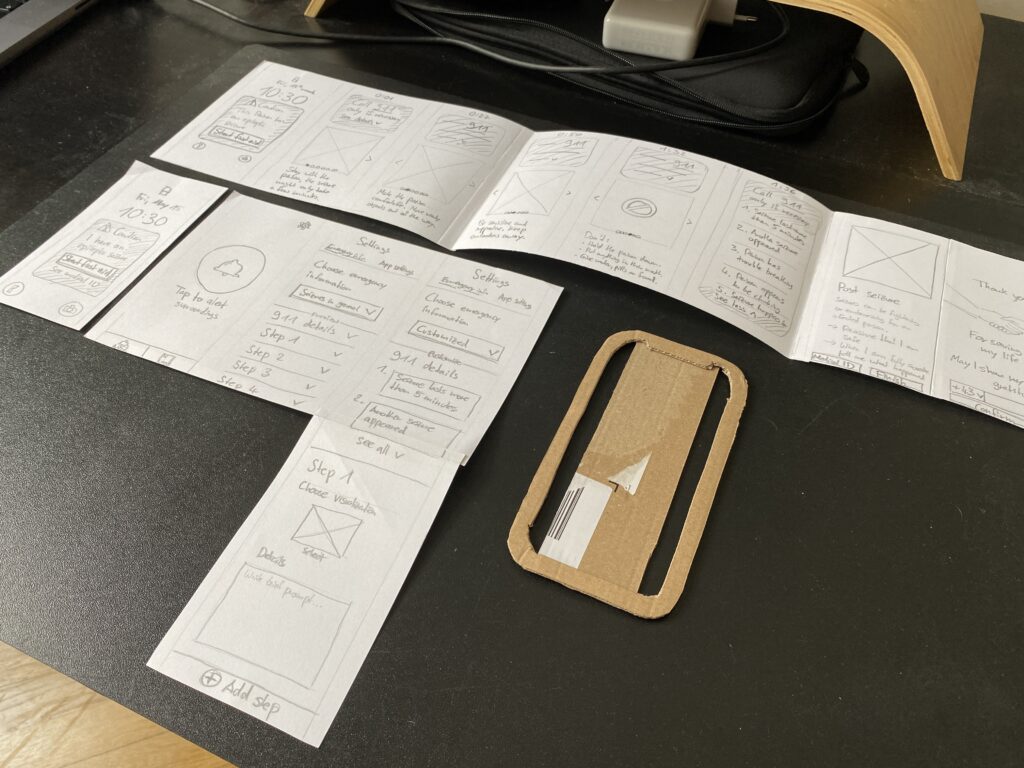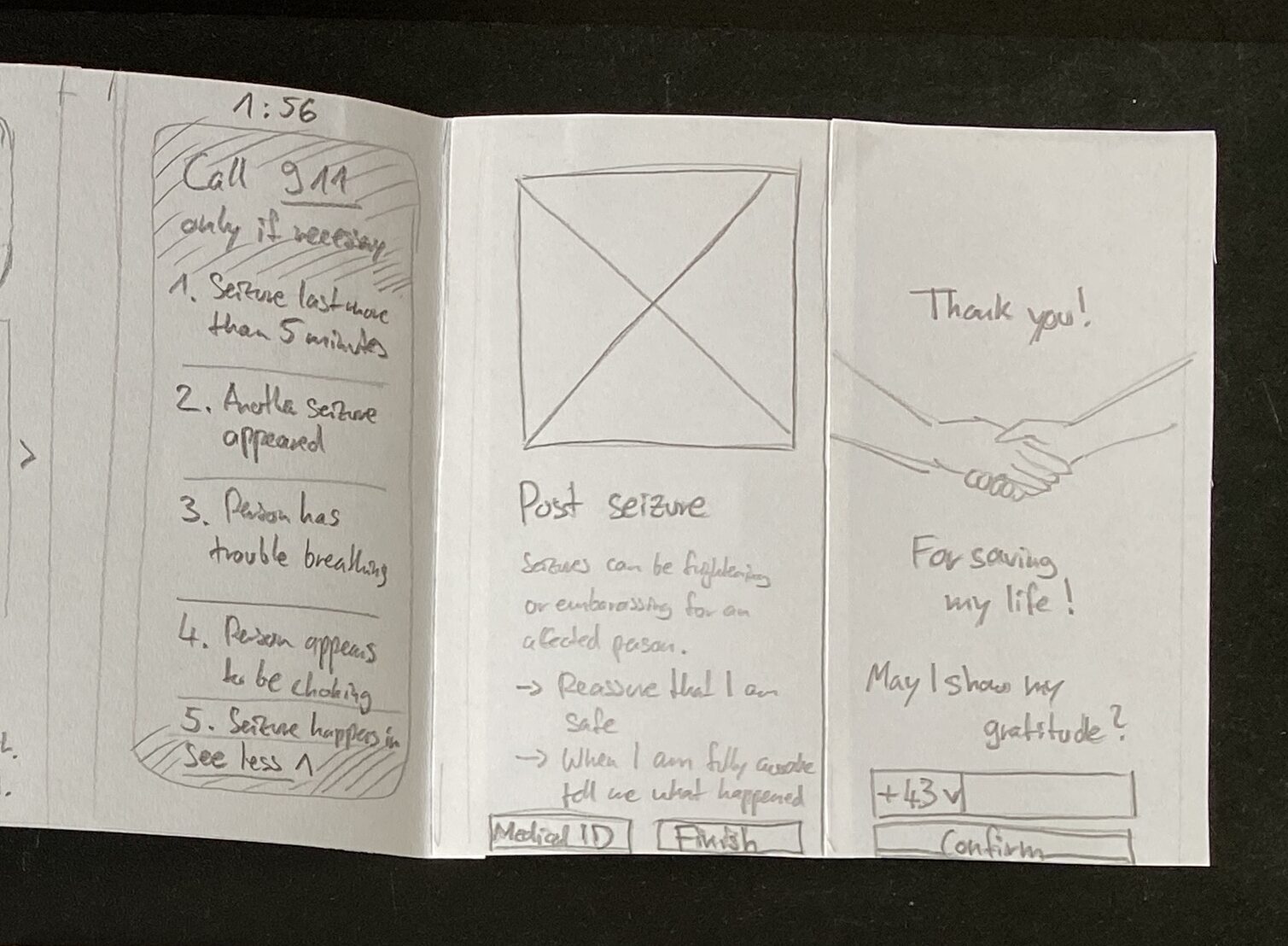With regards to the example of Aura: Seizure First Aid mentioned in the last blog post, I iterated on a paper prototype regarding „Ad Hoc First Aid Collaboration with the Public“. This prototype had its origin in an exercise at the very beginning of the course Design & Research 2.

Underlaying concept idea
The present prototype represents a mobile app, which has to be manually activated by persons with epilepsy in case of emergency, if they notice an upcoming aura. Surrounding bystanders are then addressed by visual and auditory cues to pay attention to the smartphone.
Having a look on the smartphone, bystanders are shown what’s the matter with the person and how to help. This follows a general set of emergency information which is applicable to nearly every type of epileptic seizure. Also bystanders receive information about when it is necessary to call an ambulance.
Advancement: Tailored emergency information

One of the biggest advancements might be the possibility to individually customize emergency information to an affected person’s specific condition. For this I added customizability to the app’s settings. Besides the general emergency information, which is set as a default, users are able specify the shown information steps to their own needs. A visual representation (picture, pre-made illustration etc.) and a short textual instruction in a few sentences can be chosen, and further steps can be added.
Advancement: Findability of medical ID

Another addition is a lock screen widget, once an alert has been activated by the person with epilepsy. In case of a locked phone, this piece helps to give an understanding and access to the first aid instructions as well as the medical ID. The latter is a often hidden feature on mobile operating systems, which gets more visible with the widget once an alert has been started.
Advancement: Expressing gratitude to bystanders

Lastly another advancement could be an extended way to end the app experience, when a seizure has been overcome: Besides communicating appreciation and recognition for the provided help, bystanders can optionally leave their contact details (e.g. a mobile number) for the affected person. Afterwards the rescued person is able to get in touch with its helper.
Auditory cues
As recommended by experts mentioned in the previous blog post the auditory level should play an important role as well, when it comes to the smartphone’s findability and support to follow first aid instructions. Obviously a paper prototype can not provide sound due to its material. This is where a, at least partly, digital component have to come in.
Next steps
Iterating and extending the paper prototype was quiet easy and quick. However its detail has to undergo refinements and the eventualities for various circumstances have to be considered. At this point it makes sense to transfer this haptic paper prototype into a digital prototype, to be able to add interactivity and sound.